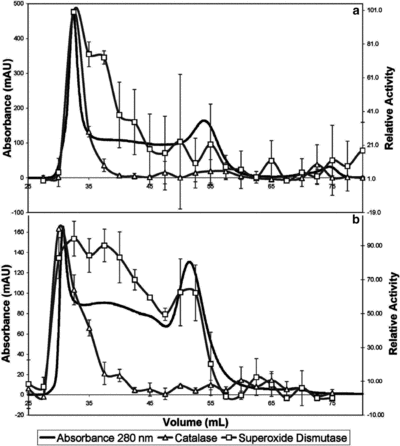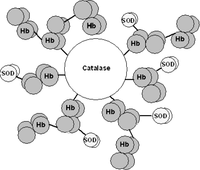Figures & data
Figure 1 Modification of proteins and capping of activated groups. Initially, proteins were activated using schemes a and b. After activation and polymerization, non-conjugated active groups were capped using the schemes depicted c and d.
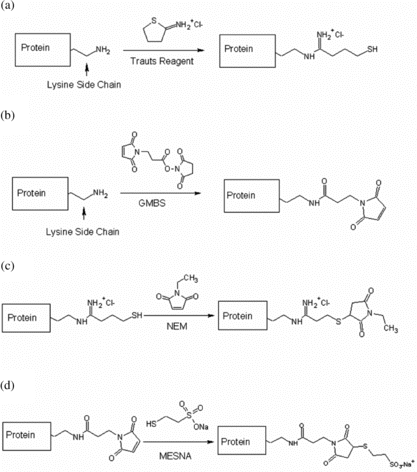
Figure 2 SDS-Page of Hb-polymers: Lanes 1 and 2, Hb polymers formed from equimolar amounts of Hb-Mal and Hb-SH. Lane 1, Hb polymer formed at pH 7.0; Lane 2, Hb polymer formed at pH 7.5. Lane 3–8, species denatured in the presence of 2-mercaptoethanol; Lane 3, pure Hb; Lane 4, Hb-Mal only; Lane 5–7, Hb polymer species, as lane number increases the amount of Hb-Mal used for polymerization decreases; Lane 8, Hb-SH only. Lanes 9–14, species denatured in the absence of 2-mercaptoethanol; Lane 9, Hb-Mal only; Lane 10–12, Hb polymer species, as lane number increases the amount of Hb-Mal used for polymerization decreases; Lane 13, Hb-SH only; and Lane 14, pure Hb.
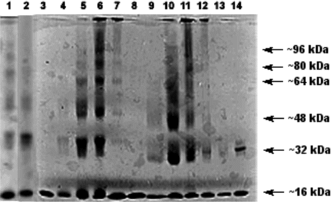
Figure 3 Size exclusion chromatography of polymerized human Hbs: a) Pure non-modified Hb; b) Hb complex resulting from addition of Hb-(10)-SH and Hb-(10)-Mal added at equal molar ratios; c) complex resulting from Hb-(15)-SH and Hb-(15)-Mal; d) complex resulting from Hb-(25)-SH and Hb-(25)-Mal. The number before the -SH refers to the mole excess of Trauts reagent used to modify the Hb. The number before the -Mal refers to the mole excess of GMBS used to modify the Hb.
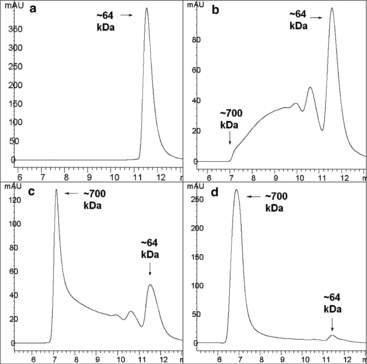
Figure 4 SEC of heterogeneous Hb-Cat-SOD polymers obtained using Pharmacia Sephacryl S-300: a) Type I polymer. Polymer made by first conjugating Cat-Mal and Hb-SH, followed by addition of Hb-Mal and SOD-Mal; b) Type II polymer. Polymer made by first conjugating Cat-SH and Hb-Mal, followed by addition of Hb-SH and SOD-SH.
